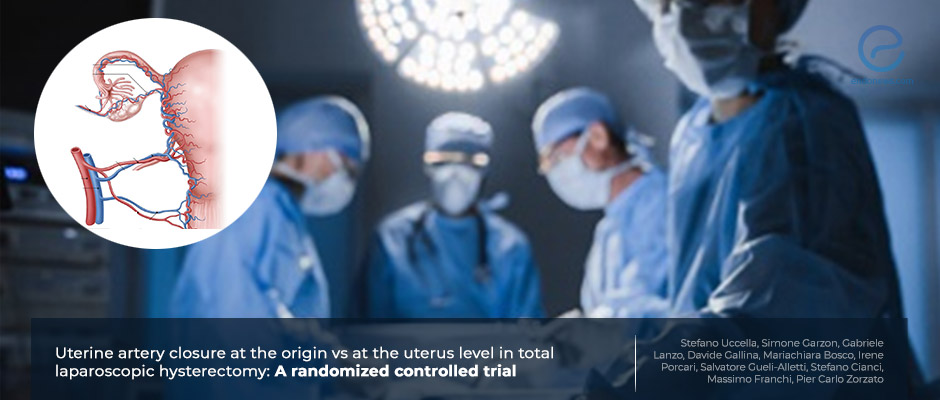Best practice: How to reduce intraoperative bleeding?
Oct 14, 2021
Endometriosis operations may necessitate specific techniques.
Key Points
Highlights:
- The uterine artery ligation at the origin may be necessary especially laparoscopic hysterectomy operations for deep infiltrating endometriosis, for a higher success rate and decreased blood loss.
Importance:
- The uterine artery closure at the internal iliac artery origin is the safe and preferred method for deep infiltrating endometriosis operations.
- Intraoperative blood loss is higher for uterine level uterine artery ligations compared to the closure at the origin of the uterine artery.
What's done here:
- This article reports a single-blind, parallel-group, two-arm, randomized control trial, by an Italian research team, to compare the intraoperative blood loss of two types of uterine artery closure during total laparoscopic hysterectomy.
- A total of a hundred and eighty women with benign diseases scheduled for total laparoscopic hysterectomy were randomized for uterine artery ligation levels.
- Intraoperative blood loss, the conversion rate from one to the other technique, perioperative outcomes (operative time, length of postoperative hospitalization, and complications) were compared.
Key Results:
- Most of the parameters in terms of intraoperative and postoperative complications were statistically similar when the two groups were compared.
- Blood loss was significantly higher in the group where the uterine artery ligated at the uterus level.
- Eleven protocol violations were registered in the uterine level ligation group, while closure at the origin from iliac arteries in 90 women was successful.
- The protocol violation necessity for conversion from uterine level to the ligation from the internal iliac artery origin technique was statistically significant.
- Interestingly, most of the patients who necessitated conversion (9/11) had the diagnosis of "endometriosis".
Lay Summary
Although laparoscopic hysterectomy is a popular and common approach for removing benign uterine lesions, some technical steps especially concerning uterine artery closure depend on the surgeon's preference. Uterine artery ligation may be performed either at the uterus level, which is common and easy, but, sometimes closure at the origin of the internal iliac arteries may be necessary. The superiority of one method to the other is still unclear.
To clarify the question about "from which level of the uterine artery closure is better for performing a successful total laparoscopic hysterectomy" for benign operations, Uccella et al from the Department of Obstetrics and Gynecology, University of Verona, Italy, set up a single-blind, two-armed randomized controlled study on women with benign diseases who underwent elective total laparoscopic hysterectomy with or without adnexectomy. Intraoperative blood loss, the conversion rate from one to the other technique, perioperative outcomes such as the operative time, length of postoperative hospitalization, complications were of interest as well.
Hundred and eighty women were randomized into 90 patients in each group, demographic and clinical characteristics being statistically comparable. Although all parameters in terms of intraoperative and postoperative complications were statistically similar when the two groups were compared, blood loss was significantly higher in the group where the uterine artery ligated at the uterus level. Furthermore, a statistically significant necessity of conversion from uterine artery ligation level technique to the ligation from the internal iliac artery origin technique, with a failure rate of 12%. Interestingly, the group of patients who necessitated conversion mostly (9/11) had the diagnosis of "endometriosis".
The authors concluded that the closure of the uterine artery at the origin from the iliac arteries was associated with a lower blood loss and may be considered as a routine approach for deep infiltrating endometriosis operations. This interesting article was recently published in "Acta Obstetrics and Gynecologica Scandinavica".
Research Source: https://pubmed.ncbi.nlm.nih.gov/34396512/
total hysterectomy laparoscopy uterine fibroids randomized controlled trial intraoperative blood loss uterine artery endometriosis.

